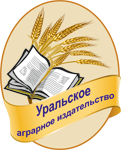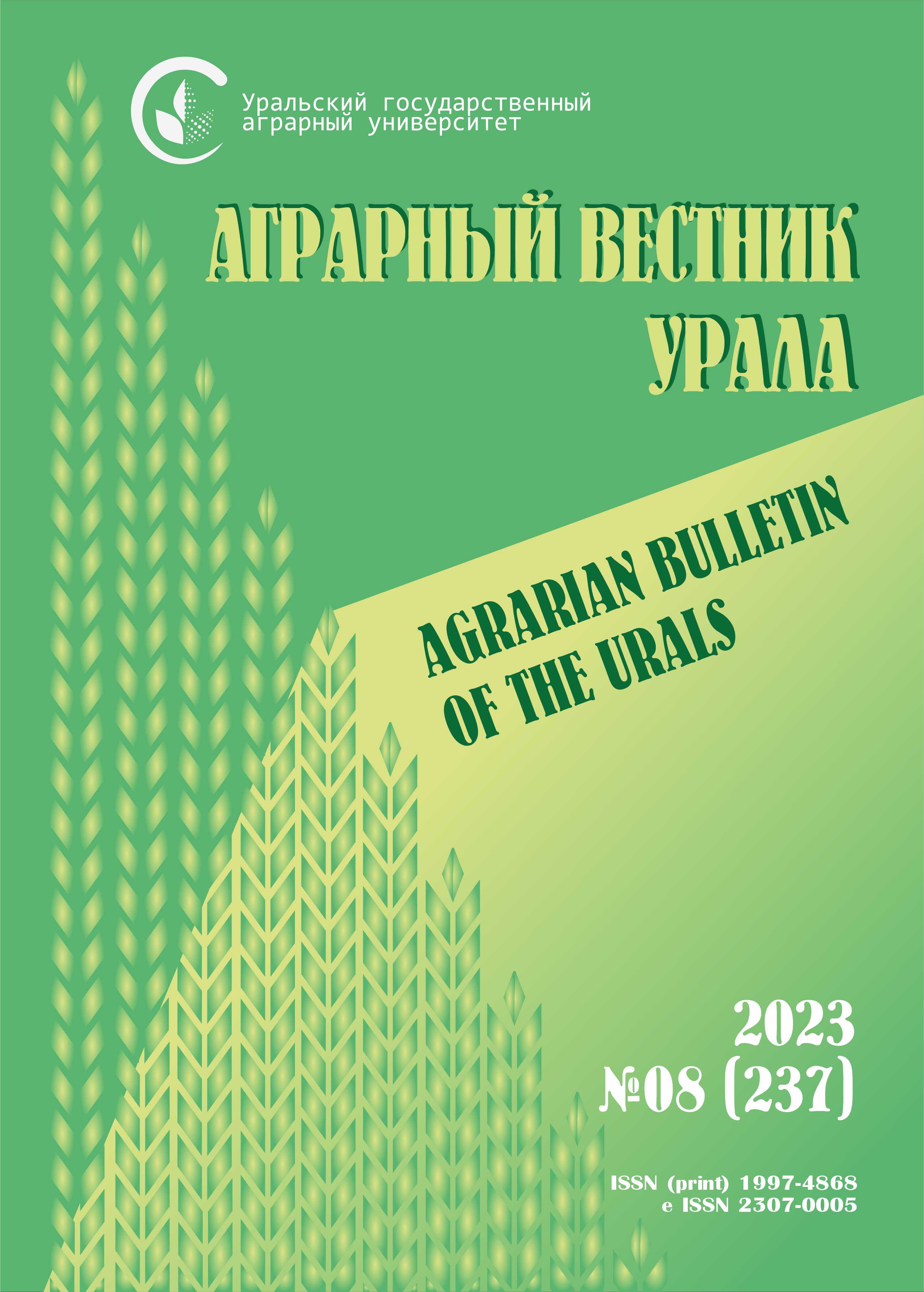g. Mihaylovsk, Russian Federation
Abstract. The purpose is to assess the current state of steppe ecosystems of the arid zone of the Stavropol Territory, using the example of a natural plant community exposed to anthropogenic, including technogenic effects. Methods. Geobotanical studies were carried out in 2022 on accounting sites of 100 m2 and 0.5 m2. Vegetation was described according to the O. Drude system with a note of the abundance of species, the projective coverage of the soil surface by plants, the state of vegetation cover at the time of the survey. Results. It has been established that in the studied territory, under the influence of anthropogenic impact on the vegetation cover, there was a significant destruction of steppe vegetation of pasture lands of the arid zone, and man-made impact aggravated an already difficult situation causing additional damage, in particular, additional loss of local flora, and, accordingly, the existing at that time (albeit not so significant) pasture feed. This led to the emergence of Russian tristle-glasswort vegetation, not eaten by animals. Of the 31 species of wild flora noted throughout the survey, only 7 (22 %) species are not weeds quantitatively in the herbage, but their number does not play a decisive role in the formation of the fodder mass. It is quite obvious that over the entire area of the study, the vegetation cover of pasture lands in its present form is of little use for effective agricultural production. Scientific novelty. New data have been obtained on the modern phytocenotic diversity of steppe communities of the arid zone, the transformation of vegetation cover taking into account the influence of anthropogenic, including man-made impacts.
steppe ecosystems, arid zone, virgin land, plant communities, biodiversity, wild flora, anthropogenic impact, degradation
1. Petrova M. V. Stepi i ih znachenie (global'noe i regional'noe) // Voprosy stepevedeniya. 2021. № 1. S. 48-56. DOI:https://doi.org/10.24412/2712-8628-2021-1-48-56. EDN: https://elibrary.ru/VJUPZS
2. Tu M., Lu H., Shang M. Monitoring Grassland Desertification in Zoige County Using Landsat and UAV Image // Polish Journal of Environmental Studies. 2021. Vol. 30. No. 6. Rr. 5789-5799. DOI:https://doi.org/10.15244/pjoes/136184. EDN: https://elibrary.ru/OLSLSG
3. Gulyanov Yu. A., Levykin S. V., Kazachkov G. V. Prirodopodobnye tehnologii pastbischnogo ispol'zovaniya stepnyh ugodiy v usloviyah prirodnyh i antropogennyh izmeneniy // Voprosy stepevedeniya. 2019. № 15. S. 77-81. DOI:https://doi.org/10.24411/9999-006A-2019-11511. EDN: https://elibrary.ru/JUFCPH
4. Grigorevskiy D. V. Sravnitel'nyy analiz ekologicheskoy effektivnosti ispol'zovaniya prirodno-resursnogo potenciala, na primere klyuchevyh territoriy stepnoy zony RF // Voprosy stepevedeniya. 2018. № 14. S. 52-56. DOI:https://doi.org/10.2441/9999-006A-2018-00003. EDN: https://elibrary.ru/ZEEUHB
5. Kalmykova E. V., Mel'nik K. A., Kuz'min P. A. Vidovye razlichiya v soderzhanii fotosinteticheskih pigmentov u rasteniy aridnyh territoriy yuga Rossii // Agrarnyy vestnik Urala. 2023. № 03 (232). S. 32-42. DOI:https://doi.org/10.32417/1997-4868-2023-232-03-32-42. EDN: https://elibrary.ru/ZMUIUC
6. Gubarev D. I., Levickaya N. G., Derevyagin S. S. Vliyanie izmeneniy klimata na degradaciyu pochv v aridnyh zonah Povolzh'ya // Aridnye ekosistemy. 2022. T. 28. № 1 (90). S. 20-27. DOI:https://doi.org/10.24412/1993-3916-2022-1-20-27. EDN: https://elibrary.ru/ITNGVL
7. Yuferev V. G., Tkachenko N.A., Sinel'nikova K. P. Spektral'nye harakteristiki opustynennyh pastbisch Chernyh Zemel' // Aridnye ekosistemy. 2022. T. 28. № 1 (90). S. 65-72. DOI:https://doi.org/10.24412/1993-3916-2022-1-65-72. EDN: https://elibrary.ru/QGKJPT
8. Rybashlykova L. P., Belyaev A. I., Pugacheva A. M. Monitoring sukcessionnyh izmeneniy pastbischnyh fitocenozov v «potuhshih» ochagah deflyacii Severo-Zapadnogo Prikaspiya // Yug Rossii: ekologiya, razvitie. 2019. № 14 (4). S. 78-85. DOI:https://doi.org/10.18470/1992-1098-2019-4-78-85. EDN: https://elibrary.ru/JVPGDR
9. Rybashlykova L. P., Konev S. V. Sovremennoe ekologicheskoe sostoyanie lugopastbischnyh ekosistem Volgo-Ahtubinskoy poymy // Puti povysheniya effektivnosti oroshaemogo zemledeliya. 2018. № 1 (69). S. 137-140. EDN: https://elibrary.ru/YUDSOU
10. Chibilev A. A., Meleshkin D. S., Grigorevskiy D. V. Sovremennoe sostoyanie zemel' i sel'skohozyaystvennyh ugodiy regionov stepnogo poyasa Rossii // Voprosy stepevedeniya. 2021. № 2. S. 72-81. DOI:https://doi.org/10.24412/2712-8628-2021-2-83-92. EDN: https://elibrary.ru/BKGPMQ
11. Bulahtina G. K. Izuchenie adaptivnogo potenciala kormovyh kustarnikovyh rasteniy dlya ispol'zovaniya v vosstanovlenii degradirovannyh polupustynnyh pastbischnyh ekosistem // Agrarnyy vestnik Urala. 2022. № 01 (216). S. 2-11. DOI:https://doi.org/10.32417/1997-4868-2022-216-01-2-11. EDN: https://elibrary.ru/BHZFBU
12. Rybashlykova L. P. Vliyanie zapovednosti i vypasa na strukturu cenopopulyaciy v soobschestve Festuca valesiaca Gaudin // Izvestiya Timiryazevskoy sel'skohozyaystvennoy akademii. 2022. № 1. S. 52-60. DOI:https://doi.org/10.26897/0021-342X-2022-1-52-60. EDN: https://elibrary.ru/GBFQQL
13. Sozinov O. V., Schukina K. V., Korablev A. P., Kessel' D. S., Liksakova N. S., Pukinskaya M. Yu. Fluktuacii ekologo-cenoticheskih harakteristik rastitel'nosti lugovoy kateny (Karel'skiy peresheek) // Botanicheskiy zhurnal. 2022. T. 107. № 11. S. 1067-1082. DOI:https://doi.org/10.31857/S0006813622110060. EDN: https://elibrary.ru/BWXJWV
14. Lapenko N. G., Honina O. V. Ocenka pastbischnoy digressii stepnyh ekosistem aridnoy zony Stavropol'ya // Dostizheniya nauki i tehniki APK. 2022. T. 36. № 5. S. 16-20. DOI:https://doi.org/10.53859/02352451_2022_36_5_16. EDN: https://elibrary.ru/NOICIN
15. Chebotar V. K., Chizhevskaya E. P., Baganova M. E., et al. Endophytes from Halotolerant Plants Aimed to Overcome Salinity and Draught // Plants. 2022. Vol. 11. No. 21. Article number. 2992. DOI:https://doi.org/10.3390/plants11212992. EDN: https://elibrary.ru/KXODTI
16. Dzybov D. S. Rastitel'nost' Stavropol'skogo kraya: monografiya. Stavropol': Agrus, 2018. 492 s. EDN: https://elibrary.ru/VTQNVQ









